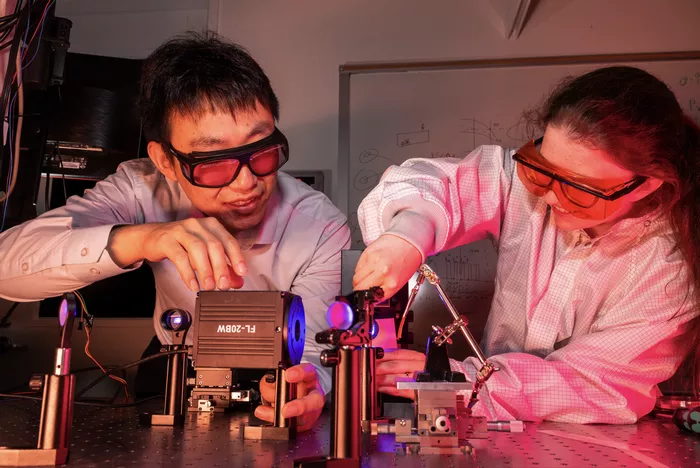Engineers at Rice University have unveiled a groundbreaking soft robotic arm that operates wirelessly—powered and directed solely by laser light and artificial intelligence. This innovative system offers new possibilities for implantable medical devices and industrial robots that handle fragile or irregularly shaped objects.
In a recent study published in Advanced Intelligent Systems, Dr. Hanyu Zhu, assistant professor of materials science and nanoengineering, led a team that created a light-activated robotic arm capable of complex, real-time movements. The arm bends, reaches, and navigates without any onboard electronics, wires, or batteries, thanks to a custom polymer and an AI-driven control system.
Elizabeth Blackert, lead author and recent doctoral graduate from Rice, explained, “This is the first time a soft robotic system has been given real-time, reconfigurable, automated control using a light-responsive material.”
The robotic arm is made from a specially engineered azobenzene liquid crystal elastomer, a smart material that contracts under blue laser light and relaxes when in the dark. Unlike conventional photo-responsive materials requiring ultraviolet light and lengthy reset times, this polymer reacts within seconds using safer visible light.
“Our material bends toward laser light like a flower stem bends toward sunlight,” Blackert added. This principle enables precise and adaptable movement.
To steer the arm, the researchers used a spatial light modulator to split a single laser beam into multiple “beamlets,” each aimed at different arm regions. By adjusting the intensity and location of these beamlets, the arm achieves smooth, fluid motions akin to an octopus’s tentacles.
Dr. Rafael Verduzco, co-author and professor of chemical and biomolecular engineering, noted, “This gives us virtually infinite degrees of freedom, surpassing what traditional rigid robots can achieve.”
The team trained a convolutional neural network (CNN) to link laser patterns to arm shapes. After analyzing a dataset of light configurations and corresponding deformations, the AI accurately predicts how to shape the laser to perform tasks such as flexing, rotating, and reaching around objects.
Currently, the prototype moves in two dimensions, but future models aim to operate fully in 3D using advanced cameras and sensors.
Soft robotics holds great potential in fields where rigid robots are limited, such as delicate manufacturing and biomedical applications. Rice’s laser-guided, wire-free arm could transform implantable devices, miniaturized surgical tools, and automation systems requiring non-invasive, adaptable motion control.
“By combining smart materials, optical engineering, and AI, we’ve created a new framework for controlling soft robots,” said Zhu. “This is a crucial step toward programmable, autonomous machines that are safer and more flexible.”
Related topics:

